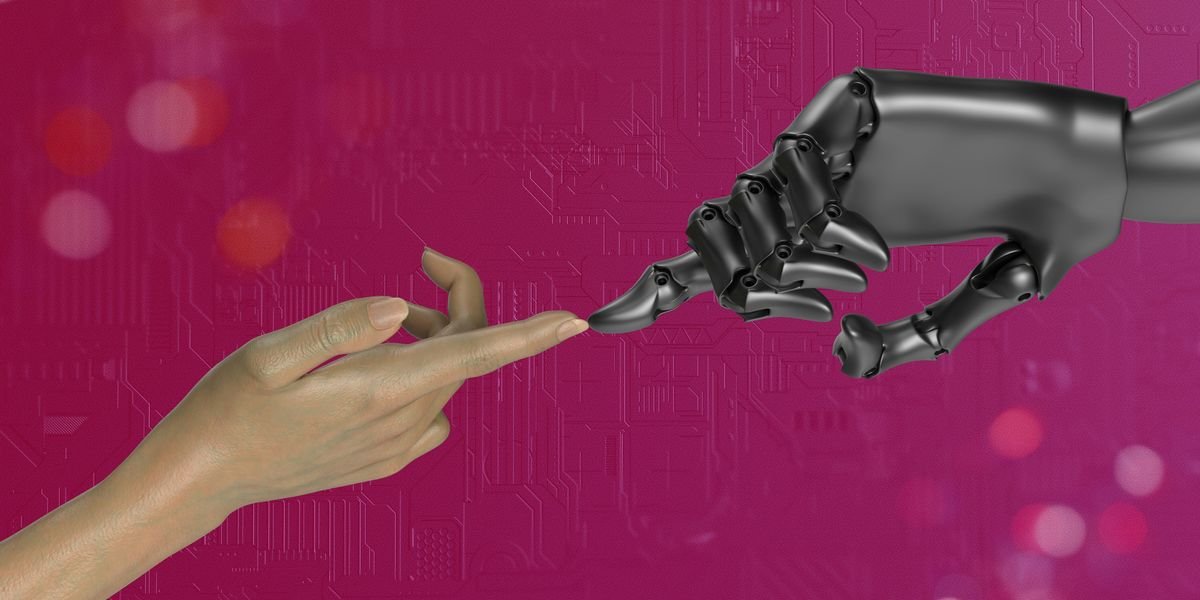Tools & Platforms
5 Extraordinary Things AI Can Do Today

By Richard D. Harroch and Dominique A. Harroch
Artificial intelligence (AI), once confined to speculative science fiction, now permeates nearly every aspect of modern life, achieving feats previously unimaginable. From creating lifelike video impersonations and diagnosing complex diseases to crafting original artistic masterpieces, AI’s rapid advancement challenges conventional boundaries of technology and ethics. Each new development astonishes experts and laypeople alike, highlighting AI’s potential to redefine our collective future while raising critical concerns around accountability, privacy, and the fundamental nature of human creativity and interaction.
Yet, the astonishing capabilities of AI also carry profound ethical implications, prompting essential debates about the responsible use of such powerful technology. As AI increasingly integrates into sectors like healthcare, entertainment, military operations, and personal interactions, it continually forces us to question how much autonomy and trust we should delegate to intelligent machines. This article examines five of the most remarkable—and often controversial—capabilities of artificial intelligence today, exploring not only their impressive achievements but also their broader societal impacts.
Naturally, we have used AI for research assistance in preparing this article.
5 Surprising Capabilities of AI
1. Hyper-Realistic Deepfake Videos
One of AI’s most startling capabilities is creating hyper-realistic deepfake videos. These videos use advanced neural network algorithms to seamlessly alter or generate digital content, convincingly depicting individuals in scenarios that are fake. For instance, the viral deepfake videos of actor Tom Cruise on TikTok illustrate the chilling accuracy with which AI can fabricate reality, deceiving even the most attentive viewers.
While deepfakes have been used for entertainment purposes, such as resurrecting historical figures in movies or creating humorous internet content, they also carry serious risks. Deepfakes can manipulate public opinion, spread misinformation during elections, or facilitate fraud and blackmail, highlighting urgent ethical and regulatory challenges posed by this rapidly advancing technology.
Key Examples:
- Tom Cruise TikTok Deepfakes: The viral @deeptomcruise account created by Chris Umé and actor Miles Fisher featured hyperrealistic videos of “Tom Cruise” doing coin tricks, biting lollipops, and goofing around in clothing stores, accumulating tens of millions of views. Source: TikTok platform
- CNN’s Coverage: Detailed analysis of how these deepfakes led to the creation of Metaphysic company can be found in CNN’s comprehensive report.
- NPR Investigation: Public radio’s examination of deepfake technology and its implications is available at The 1A’s deepfakes segment.
2. Autonomous AI Surveillance Systems
AI-driven surveillance systems represent another remarkable yet controversial innovation, capable of analyzing vast amounts of real-time video footage to monitor public spaces autonomously. These intelligent systems, such as those deployed by Clearview AI, use facial recognition technology to identify individuals within seconds, significantly enhancing law enforcement capabilities and public safety measures.
However, these AI surveillance systems spark intense debate regarding privacy violations, potential misuse, and biases in facial recognition accuracy. Cities worldwide grapple with balancing the undeniable benefits of enhanced security against significant concerns about individual rights, especially in contexts involving mass surveillance and data misuse.
Key Examples:
3. Breakthroughs in Medical Diagnostics
The healthcare industry has benefited tremendously from AI, especially in diagnostics. Google’s DeepMind, IBM Watson Health, and PathAI have pioneered groundbreaking AI systems that can surpass human accuracy in detecting diseases such as cancers, Alzheimer’s disease, and cardiac conditions. For instance, Google’s DeepMind accurately predicts acute kidney injury up to two days earlier than traditional methods, significantly improving patient outcomes and healthcare efficiency.
Despite these promising advancements, AI-driven medical diagnostics raise crucial issues around data privacy, patient consent, and the evolving roles of medical professionals. Striking the right balance between technological innovation and ethical responsibility remains critical as AI continues to reshape healthcare.
Key Examples:
- DeepMind’s Official Research: Google’s detailed explanation of their kidney injury prediction breakthrough is available on their DeepMind blog.
- Nature Scientific Publication: The peer-reviewed research paper documenting the AI system’s 48-hour prediction accuracy is published in the journal Nature.
- Veterans Affairs Partnership: Coverage of the collaboration between Google DeepMind and the U.S. Department of Veterans Affairs is detailed in Fierce Healthcare’s report.
4. Original Art, Music, and Literature
AI’s foray into creative arts has astonished the world, as generative models like Midjourney, DALL-E, and GPT-4 produce original paintings, music compositions, poetry, and even novels. For example, AI-generated artwork has been auctioned at major art houses, fetching prices previously reserved for human-created masterpieces. AI programs like AIVA (Artificial Intelligence Virtual Artist) can now compose symphonies that even seasoned musicians find impressive.
This unprecedented level of machine creativity raises significant philosophical and legal questions about authorship, originality, and intellectual property rights. As AI-generated content becomes more prevalent, society must redefine traditional artistic and legal frameworks to accommodate and regulate this emerging digital creativity.
Key Examples:
5. Conversational AI That Mimics Human Emotions
Conversational AI platforms such as Replika and Character.ai have evolved remarkably, and are now capable of simulating human emotions and providing empathetic, personalized responses. These AI companions serve as emotional support systems, assisting individuals coping with loneliness, anxiety, and depression. Their ability to understand and respond to nuanced emotional cues makes the interactions surprisingly realistic and meaningful.
While beneficial for mental health and emotional support, the authenticity of these interactions raises important ethical concerns about dependency, privacy, emotional manipulation, and data security. Ensuring users’ emotional well-being while protecting their privacy remains a complex but essential task.
Key Examples:
- Replika Platform: The leading AI companion app can be accessed at Replika.com, with detailed information about its capabilities available in their official guide and on the App Store.
- Academic Research: Scientific studies on user experiences with Replika’s emotional support capabilities have been published, including research examining how users receive social support from companion chatbots in everyday contexts. Source: PMC/National Center for Biotechnology Information
- Ethical Concerns Investigation: The Conversation’s in-depth analysis of emotional attachment to AI companions and the ethical questions they raise is available in their article “I tried the Replika AI companion and can see why users are falling hard”.
Conclusion on AI Breakthroughs
As AI technology continues to advance at an unprecedented pace, it is crucial for society to approach these innovations thoughtfully and responsibly. The remarkable capabilities of AI carry transformative potential, but they must be managed ethically and transparently to ensure that they enhance human life and foster trust rather than undermine societal values or individual freedoms.
Related Articles:
About the Authors
Dominique A. Harroch is the Chief of Staff at AllBusiness.com. She has been the Chief of Staff or Operations Leader for multiple companies where she leveraged her extensive experience in operations management, strategic planning, and team leadership to drive organizational success. With a background that spans over two decades in operations leadership, event planning at her own start-up and marketing at various financial and retail companies. Dominique is known for her ability to optimize processes, manage complex projects and lead high-performing teams. She holds a BA in English and Psychology from U.C. Berkeley and an MBA from the University of San Francisco. She can be reached via LinkedIn.
Richard D. Harroch is a Senior Advisor to CEOs, management teams, and Boards of Directors. He is an expert on M&A, venture capital, startups, and business contracts. He was the Managing Director and Global Head of M&A at VantagePoint Capital Partners, a venture capital fund in the San Francisco area. His focus is on internet, digital media, AI and technology companies. He was the founder of several Internet companies. His articles have appeared online in Forbes, Fortune, TIME, MSN, Yahoo, Fox Business and AllBusiness.com. Richard is the author of several books on startups and entrepreneurship as well as the co-author of Poker for Dummies and a Wall Street Journal-bestselling book on small business. He is the co-author of a 1,500-page book published by Bloomberg on mergers and acquisitions of privately held companies. He was also a corporate and M&A partner at the international law firm of Orrick, Herrington & Sutcliffe. He has been involved in over 200 M&A transactions and 250 startup financings. He can be reached through LinkedIn.
Copyright (c) by Richard D. Harroch. All rights reserved.
Tools & Platforms
Globevisa CEO Unveils its AI Strategy, Transforming Traditional Services Into a Tech-Driven Powerhouse
— In a decisive move set to redefine the future of service industries, Globevisa Group CEO and co-founder Henry Fan has launched a groundbreaking artificial intelligence (AI) transformation strategy that embeds AI at the core of the company’s operations. This bold initiative is not only improving efficiency and customer service but also positioning Globevisa as a global innovator in tech-driven business leadership.
Rather than relegating AI to a standalone IT function, Henry established an in-house AI Empowerment Center—a “special forces” unit that reports directly to him. This reflects his belief that AI is a business-wide opportunity, not a departmental add-on. As the architect of this transformation, Henry serves as strategist, change agent, and internal evangelist, overseeing a company-wide shift in how AI is deployed, adopted, and embraced.
The Strategist: Defining a Clear Vision for AI
Henry’s leadership begins with a clear vision for an “AI-driven Globevisa,” which he positions as the company’s North Star. This vision guides every decision, from budget allocation to the selection of core technologies. Henry ensures that AI efforts are tightly aligned with Globevisa’s business objectives, such as revenue growth, operational efficiency, and brand enhancement.
His approach is pragmatic and phased, focusing on high-value pilot projects before scaling up. He champions a “showcase to full coverage” strategy, quickly demonstrating tangible results in areas like marketing, customer service, and human resources. By tying AI initiatives directly to measurable business outcomes, such as reducing document processing times, increasing content production efficiency, or improving sales conversion rates, Henry ensures that Globevisa’s AI efforts are not just theoretical but practical and impactful.
Tackling Operational Inefficiencies with AI
Henry’s journey into AI began with a recognition of inefficiencies in the company’s internal processes, which were bogged down by repetitive, manual tasks. He saw AI not as a buzzword but as a tool to address these core operational challenges.
1.Document Processing
Globevisa’s success involves processing countless client documents, such as bank statements and passports, a task prone to human error and delays. To combat this, Henry spearheaded the development of an AI document extraction and auditing tool. This technology scans documents, extracts key information, and cross-checks it against system requirements, significantly reducing manual review time and errors. The result is faster, more accurate processing, enabling the team to handle a higher volume of clients.
2.Customer Service
Globevisa’s customer service team was overwhelmed by repetitive inquiries, leaving little time for complex, high-value interactions. Henry’s team introduced a 24/7 AI-powered chatbot capable of handling up to 80% of standard queries. This freed human staff to focus on nuanced, emotional, and complex client concerns, enhancing overall customer satisfaction.
3.Marketing Content Creation
The process of generating marketing content was slow and often lacked variety. Henry addressed this by deploying an “AI Content Factory” that generates blog posts, social media updates, and ad copy from simple keywords. This tool dramatically increased content production efficiency while reducing costs, ensuring Globevisa remains competitive in its digital marketing efforts.
The Breaker of Barriers: Overcoming Organizational Challenges
While implementing AI solutions, Henry quickly realized that the biggest obstacles were not technological but organizational and cultural. Resistance to change, data silos, and fears of job displacement were among the challenges he faced.
1.Breaking Data Silos
With 110,000 successful cases in hand, Globevisa sits on a treasury of data. However, many departments at Globevisa operated in isolation, hoarding data and refusing to share it. For instance, the AI team often needed years of sales data to train models, but obtaining access required navigating internal politics. Henry personally stepped in as a “Breaker of Barriers,” reframing data-sharing as an investment in the company’s future rather than a threat. He emphasized that AI would provide departments with sharper tools to achieve their goals, fostering a spirit of collaboration.
2.Addressing Job Displacement Fears
Employees, particularly senior staff such as copywriters, were initially hostile toward AI, viewing it as a potential replacement for their roles. Henry tackled this by redefining their positions and elevating their value. He assured employees that AI would handle 80% of mundane tasks, allowing them to focus on the remaining 20% of creative, high-value work. Copywriters, for example, were rebranded as “AI Creative Strategists” and “Final Quality Controllers,” responsible for refining and overseeing AI-generated drafts. This reframing not only eased fears but also inspired employees to embrace AI as a tool for professional growth.
3.Adjusting KPIs to Reward Adoption
In traditional service industries, departments often cling to outdated KPIs, which can hinder the adoption of new technologies. Henry addressed this head-on by personally revising performance metrics for teams involved in AI pilots. For example, customer service teams previously measured on “calls handled per hour” were now evaluated on metrics like “complex problem-solving rates” and “customer satisfaction scores.” This ensured that employees were rewarded for adopting new behaviors, not for sticking to inefficient practices.
The Chief Evangelist: Fostering a Culture of Innovation
Henry understands that technology alone cannot drive change; it requires a cultural shift. As Globevisa’s “Chief Evangelist,” he regularly communicates the importance of AI initiatives through all-hands meetings, internal newsletters, and personal demonstrations. By openly using AI tools, such as leveraging AI for meeting summaries, he leads by example, fostering a company-wide culture of innovation.
His leadership style is characterized by inclusivity and transparency. Instead of imposing top-down mandates, he actively involves employees in the transformation process, ensuring that AI is seen not as a threat but as an enabler. This human-centric approach has been instrumental in building trust and enthusiasm for AI across the organization.
A Model for the Future of Services
Henry’s approach provides a replicable roadmap for other service-based companies navigating digital transformation. His model centers on measurable value, cultural readiness, and human-AI collaboration, proving that even traditional industries can lead in a tech-first economy.
About Globevisa
Globevisa Group is a global leader in immigration and relocation services, with over 110,000 successful cases worldwide. Committed to service excellence and innovation, the company helps individuals and families navigate complex immigration processes with confidence.
Contact Info:
Name: Lena Huang
Email: Send Email
Organization: GLOBEVISA GROUP (HONG KONG) LIMITED
Website: https://www.globevisa.com/
Release ID: 89168612
In case of identifying any errors, concerns, or inconsistencies within the content shared in this press release that necessitate action or if you require assistance with a press release takedown, we strongly urge you to notify us promptly by contacting error@releasecontact.com (it is important to note that this email is the authorized channel for such matters, sending multiple emails to multiple addresses does not necessarily help expedite your request). Our expert team is committed to addressing your concerns within 8 hours by taking necessary actions diligently to rectify any identified issues or supporting you with the removal process. Delivering accurate and reliable information remains our top priority.
Tools & Platforms
Oak Lawn Community High School to implement AI gun detection tech – NBC Chicago

A high school in suburban Chicago was awarded a grant to implement AI-powered gun detection technology.
Oak Lawn Community High School District 229 was one of 50 recipients selected nationwide for the Omnilert Secure Schools Grant Program, the school said in a recent announcement.
The district was awarded a three-year license for Omnilert Gun Detect, an “advanced AI-powered gun detection technology” — at no cost.
The AI system identifies firearms “in real-time through existing security camera infrastructure,” the announcement said.
Once a potential threat is identified, the AI system activates a rapid response process by alerting school officials and law enforcement, ultimately ensuring that threats can be addressed “as quickly and effectively as possible,” the announcement said.
The implementation of the AI system aligns with District 229’s security strategy, that includes a combination of physical safety measures, emergency preparedness and mental health resources, the announcement said.
The school said staff training and safety drills will be done to ensure the technology is used effectively and responsibly.
Tools & Platforms
Your browser is not supported
usatoday.com wants to ensure the best experience for all of our readers, so we built our site to take advantage of the latest technology, making it faster and easier to use.
Unfortunately, your browser is not supported. Please download one of these browsers for the best experience on usatoday.com
-
Tools & Platforms3 weeks ago
Building Trust in Military AI Starts with Opening the Black Box – War on the Rocks
-

 Ethics & Policy1 month ago
Ethics & Policy1 month agoSDAIA Supports Saudi Arabia’s Leadership in Shaping Global AI Ethics, Policy, and Research – وكالة الأنباء السعودية
-

 Events & Conferences3 months ago
Events & Conferences3 months agoJourney to 1000 models: Scaling Instagram’s recommendation system
-

 Jobs & Careers2 months ago
Jobs & Careers2 months agoMumbai-based Perplexity Alternative Has 60k+ Users Without Funding
-

 Business1 day ago
Business1 day agoThe Guardian view on Trump and the Fed: independence is no substitute for accountability | Editorial
-

 Funding & Business2 months ago
Funding & Business2 months agoKayak and Expedia race to build AI travel agents that turn social posts into itineraries
-

 Education2 months ago
Education2 months agoVEX Robotics launches AI-powered classroom robotics system
-

 Podcasts & Talks2 months ago
Podcasts & Talks2 months agoHappy 4th of July! 🎆 Made with Veo 3 in Gemini
-

 Podcasts & Talks2 months ago
Podcasts & Talks2 months agoOpenAI 🤝 @teamganassi
-

 Jobs & Careers2 months ago
Jobs & Careers2 months agoAstrophel Aerospace Raises ₹6.84 Crore to Build Reusable Launch Vehicle



















